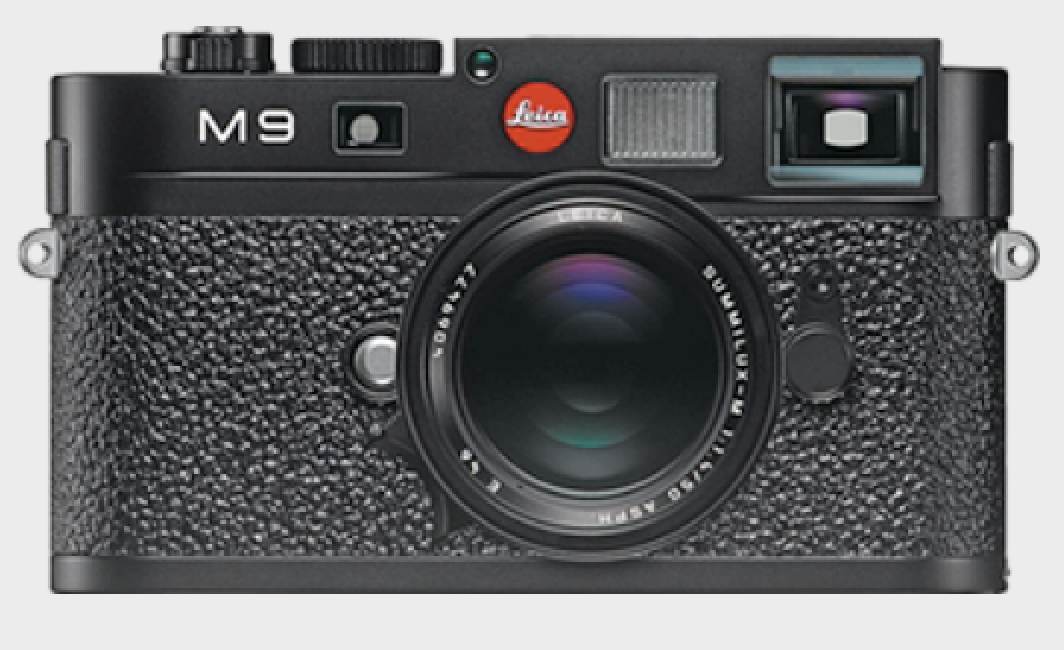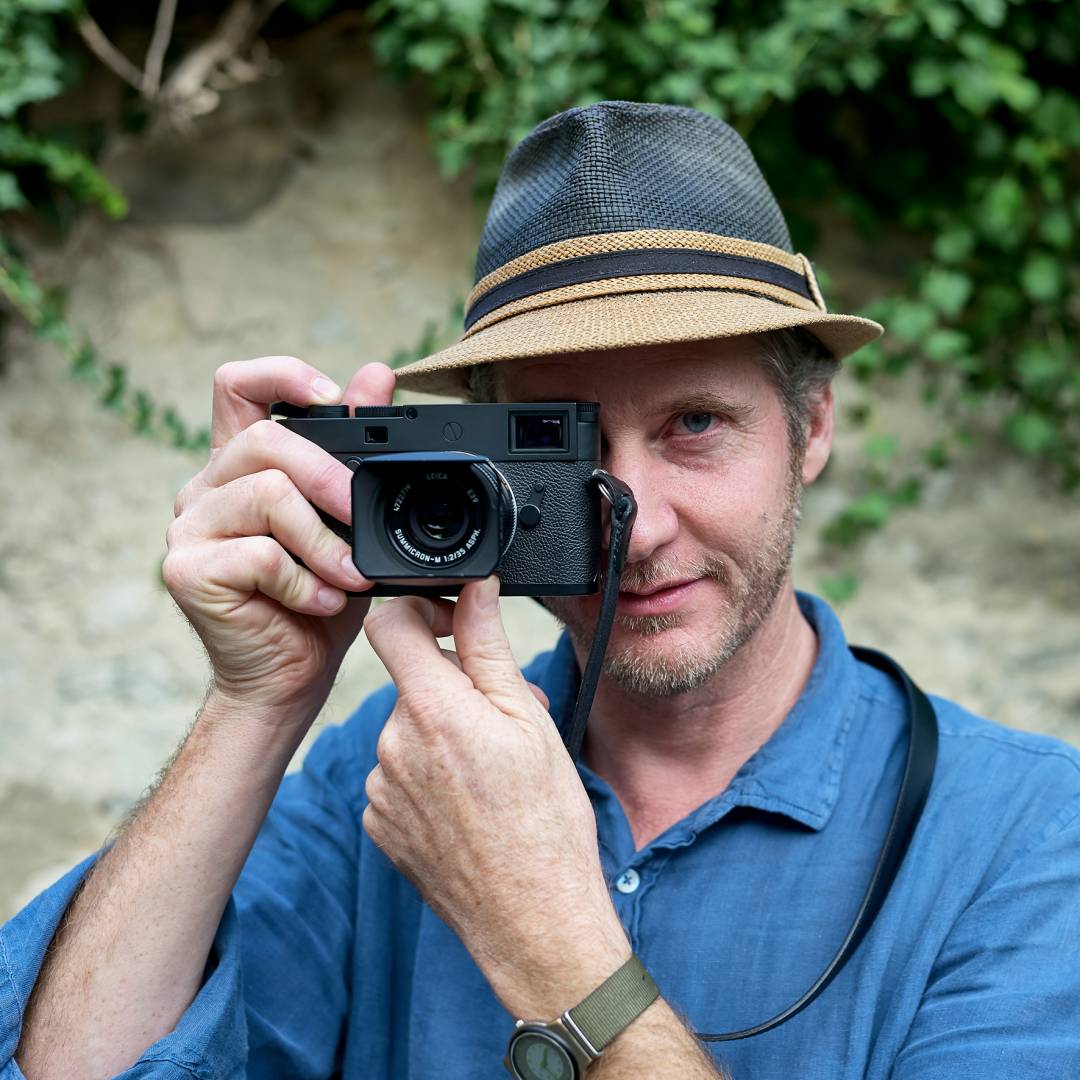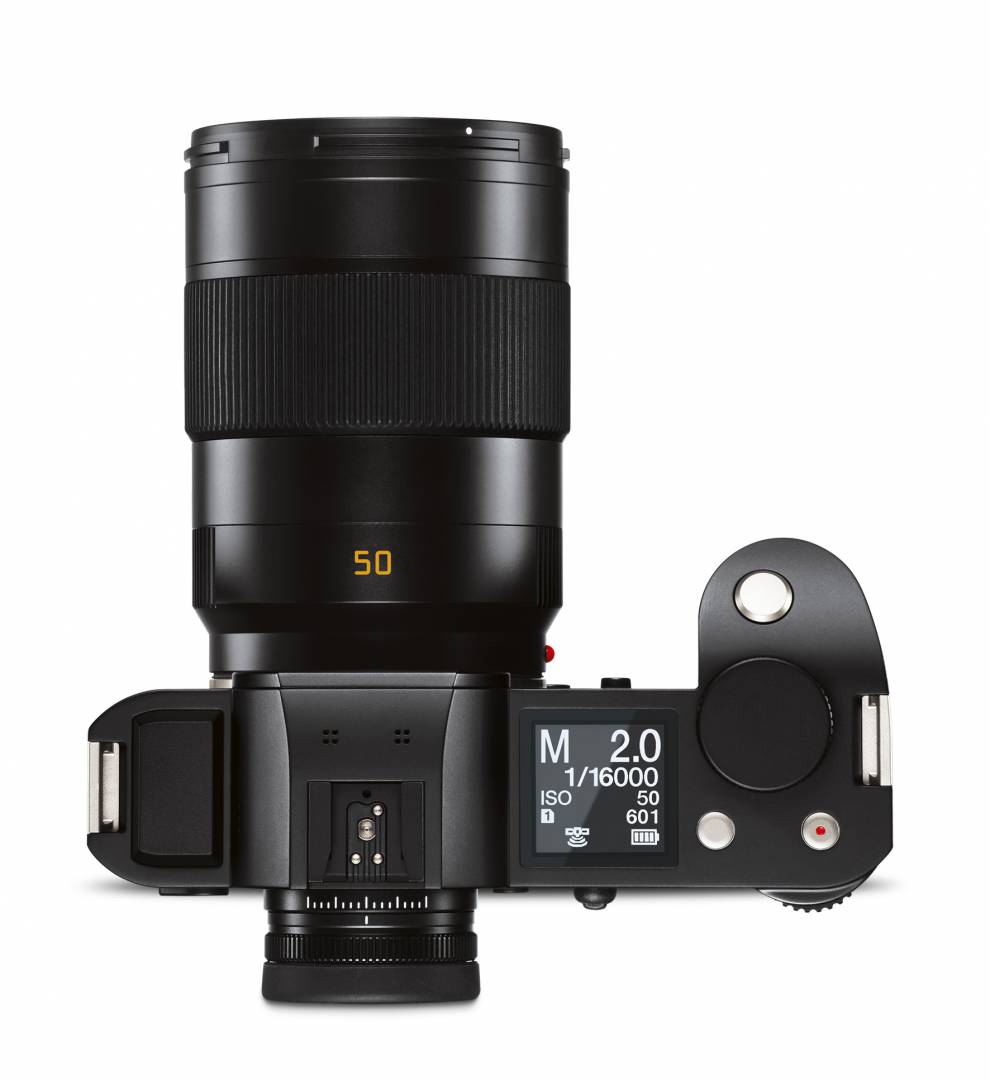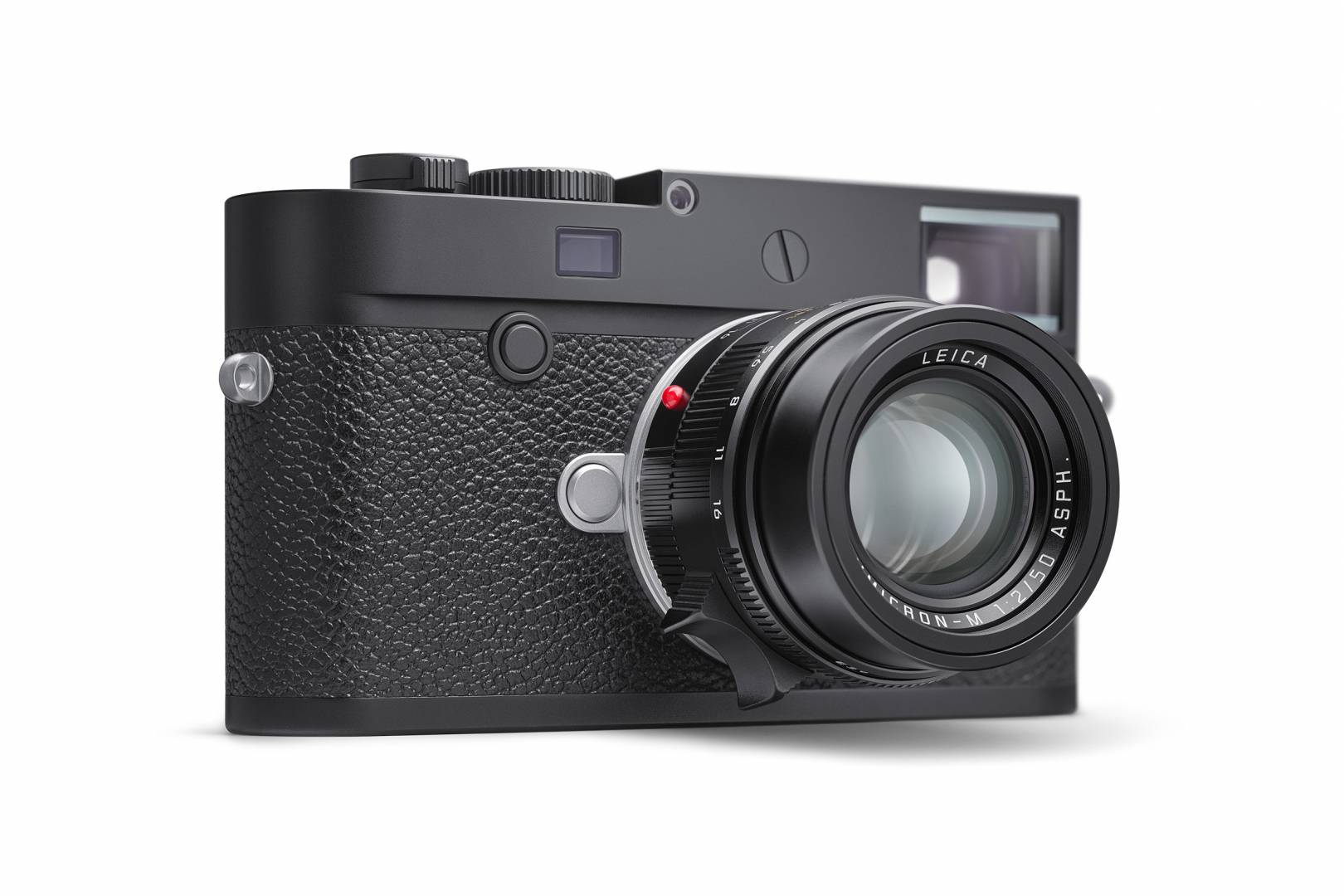Back in 2010 when micro four-thirds cameras and lenses hit the shelves, small was beautiful. Even mid-decade, when Fuji and Sony APS-C cameras grabbed our attention, small cameras and small lenses were a virtue. Now things are changing. Only the Leica M system, which combines tiny full-frame lenses with a series of relatively light bodies, is holding its corner.

Bloat, bloat
While Leica has maintained this economy of scale with its TL/CL line1, the mirrorless camera. in general, has suffered from bloat. It’s much like the original Volkswagen Golf compared with the current model or, perhaps even more amazing, the tiny late-1950 Mini parked alongside today’s bulbous versions.
About all that remains of the original Mini is that trademark central instrument dial and that happens to be my least-favoured feature.

The main reason for cameras and lenses to grow is the move to larger sensors and a quest for ever-wider apertures. Today’s leading full-frame mirrorless bodies are little different in size and weight to the pro DSLRs that we were all keen to ditch at the end of the noughties. Gradually, size has crept up on us.
Even the Sony a7 range, the epitome of a compact full-frame mirrorless camera, is putting on weight in its old age. This article shows how the latest a7r IV compares with the first generation.

Porky lenses
It’s in the lens department, though, that the effects of bloat are most noticeable. The faster Leica SL primes, for instance, are enormous compared with, say, equivalent M lenses. And Sigma’s Art cousins are just as bulky.
M lenses, of course, need no electronics, no stabilisation and no autofocus, so it’s no surprise they are small and relatively light2.

But the difference is increasingly remarkable, especially when it is remembered that small lenses such as the 50mm Apo-Summicron-M ASPH will produce results just as good, if not better, than the autofocus monsters we are now expected to carry around with our mirrorless cameras.
Wherever you look, whether at the L-mount line-up or at Canon, Nikon or other marques, pro-quality lenses are huge. They are not going to get any smaller any time soon.
What’s your view? Are bigger lenses necessary for maximum performance? Is it more sensible to choose slower lenses, say f/2 or f/2.8, in order to keep down weight but still enjoy pro quality?
- Peter Karbe, who designed the lenses for the Leica T deliberately omitted in-lens stabilisation and opted for relatively slow zooms in order to keep the system compact and light ↩
- This “analogue” design is one reason why M lenses, with no electronic p
a rts, are a wonderful long-term investment. On past experience, they will still be around and functioning in another hundred years. ↩

I think it all depends on what you are wanting to achieve with your photography and what you actually need to aid you.
I think that all this tech is great with lenses with built in VR and all the fastest apertures we have ever seen but do we need it?
For me, odd times perhaps but that 5% of the time I can have a specialist lens that I bring out the cupboard. The rest of the time I’m happy to have something small, light and unassuming. In fact for this very reason I have two Leica 35mm lenses. A 35mm Summilux asph f1.4 (the latest version) which is a hefty piece of glass for a ‘M’ lens anyway. I have also got a 35mm Summicron F2 (the one with the plastic hood). Its noticeably smaller, lighter and most important less flashy. This enables me to get away with more images when I’m shooting street photography. Yes some of this might be my own perceptions but that change of mind set has pushed me to get images that I might not have before.
Bigger inst always better but the most important thing is having the right tools for you.
And for those of us who do like our lenses on the ‘less-than-porky’ side, it’s pretty hard to beat some of the Fuji lenses, particularly the 23mm and 35mm f2s (”Fujicrons” to some). I love their tapered shape to stay out of the X-Pro 2 OVF’s way, size, weight, construction, focus speed, etc.
I believe that all seem to forget the incredible Canon M series of cameras and lenses.
Small light bodies and lenses, very well built and still have AF and IS.
If you want big lenses for the system you can get them and they still work 100% perfect.
Ah, but the Canon Ms seem so sluggish – to me, anyway; squeeze the shutter button, and some while later they take a photo. The M lenses all seem to have such small apertures – except for the 32mm f1.4 – rather like the pitiful Nikon 1 series, and so tend to need a higher ISO than other lenses.
I’d like to like the Canon Ms, but they seem – to me – so dreadfully ‘under-powered’.
I personally only want one fast lens in full frame glass. I choose 50mm/1.4 as my fast glass and then only want f2/2.8/4 for the rest of the focal lengths so that I can carry glass and enjoy myself. The unfortunate thing is that most manufacturers think they need to do exotic glass to stay alive in a shrinking market. I am currently waiting for the slow availability of the SL 35mm and SL 24mm and then my joy will be complete.
I currently have the following m-mount glass that are so tiny compared to AF glass that I am delighted. The legendary Leica 50/1.4 black chrome, the ultra tiny amazing Leica 28/5.6 summaron, the amazing tiny Voightlander 50/3.5, the delicious 7Artisans 75/1.25 (I could not resist the price and I should write an article on it).
Small and quality is the winner for me.
Brian, I am currently using the Summaron and would be interested in your views if you could email me direct. Also we might be able to use some of your photographs from this lens — particularly any street shots be Süd- that is the theme of the article.
Hi Mike, I plan to take take some comparison shots of the Summaron on the Panny S1R, Panny S1 and the Leica M-E (M9 version) to compare vignetting, cyan shift, and corner sharpness/smearing. I just got a brand new M-E with CCD at a fire sale price and 5 year Leica warranty – it is the most magical sensor I have ever seen! I will take some more pictures with Summaron and contact you. I am delinquent on writing articles but have one in progress.
Hi Mike, it appears you have autocorrect on. Autocorrect on my phone is done by a little elf in the phone that is mostly drunk.
It seems my autocorrect prefers German. I can’t remember what the original was so let’s leave it as a curiosity to be savoured!
I had a very brief play with the Summaron in a store two days ago. What a great little creation from Leica. And you found a brand new M-E !? Lucky lad, congrats!!
There’s a hierarchy of assumptions that some photographers make, that bigger sensors and faster lenses make you a better photographer. It’s a bit like sports cars with long bonnets/hoods. Sadly these assumptions and “appendages” rarely substitute for real talent.
Personally smaller and lighter encourage me to go out more with a camera and take pictures, whereas a bag full of pro kit would be time better spent in the gym.
For me the CL with the 23mm is about as close to perfect as I can get. (Maybe I should live dangerously and try an M10 sometime…) I have to think about the shot I want and move my feet to get it – I can’t blame faffing about changing lenses as an excuse. I shoot what’s there not what might have been.
So keep your heavy stuff – I can do better with what I have – less really can be more.
I blame the lens bloat on Zeiss and their Otus, which was followed by the Summilux SL range; all in the name of absolute perfection to achieve the highest resolution, strongest contrast and least distortion. Whilst that is what “photographers” say they look for when selecting a lens, and professional SLR camera bodies with grips weighing in at close to 1kg, having the ultimate 1Kg lens on the front was Ultimate Macho. Leica took that to the mirrorless domain. Bad Leica!
Mabye I am abnormal. For portraits I do not want to show every wrinkle and so my favourite lenses are the pre-hysterical, M50mm Summilux and M75 Summilux (itself a beast but still smaller than SL Summiluxes); for landscapes I shoot at f8-f16 so a 21mm f3.4 is perfectly adequate.
Hi Ravi, welcome to the Macfilos commentariat!
The Sony A7 range grew larger in just two dimensions: ‘thicker’ (from front to back; from the lens mount to the rear display screen) to accommodate the sensor stabilisation ..and the handgrip’s got bigger to accommodate a bigger (i.e; longer-lasting) battery. The rest of the camera dimensions are pretty much unchanged.
Sensor stabilisation (jiggling the sensor around on a movable substrate) needs more power than a fixed sensor, of course ..so it’s not surprising that the battery (and battery-enclosing handgrip) has got bigger. I dare say that a steering wheel with a built-in airbag is larger (thicker) than a simple steering wheel without one.
Otherwise, the A7 series seems to have stayed pretty much the same, compared with how, say, Panasonic has grown their cameras ..or compared with that jump from Leica M to Leica SL. (The SL, it seems, could have been as small as the Sony A7, except that the enormous SL lenses would then have looked even more daft and been more unwieldy. So the camera body was made larger ..to match the huge lenses.)
“Are bigger lenses necessary for maximum performance?” ..depends what you mean by ‘performance’. If the camera has sensor stabilisation, then there’s no need for stabilisation in the lenses ..and that can keep them smaller. The huge size of the SL lenses is down to the motors for autofocus and aperture control, really. For very fast focusing, some(?), all(?) of the SL lenses have two sets of internal focus movements: two lightweight elements move independently, instead of one heavier element moving ..but that means having TWO focus motors inside the lens body!
The APO-Summicron-SL 50 f/2 weighs 740grams, and the similar (but with no electronics inside) APO-Summicron-M 50mm f/2 for the M series weighs 300grams ..less than half the weight of the other, and very, very much smaller.
So what’s the advantage of having the huge and heavy SL combination? Autofocus. But my dears, just put the Apo-M on a Techart adaptor, and use it on, say, a Sony A7RII ..and you’ve got autofocus ..without the size, and without the weight.
So my advice is mix’n’match. You can get autofocus with small Leica-M lenses, and you can get stabilisation (and completely silent shooting) ..if you use them on a different brand of camera. (I keep telling that Andreas Kaufmann to put a motorised mount on the next M ..but he just doesn’t listen..)
“..pro-quality lenses are huge..” ..no they’re not ..not if you use M-fit lenses. But pro-quality autofocus (..and stabilised..) wide-ish aperture lenses are huge ..though very often at a fraction of the price of the small M lenses (..I’m thinking of the Canon 85mm f1.2 lens: the size and weight of a small melon) ..but what beautiful results!
There’s always a trade-off ..but mix’n’match!
As noted in one of Mike’s recent write-ups, my hope for the Panasonic (and Leica SL line, I guess) fullframes lies with Sigma and their 45/2.8 lens. That’s the one that I hope sells like hotcakes and shows the manufacturers that we do indeed value more compact lenses over the seemingly inevitable drive to large f/1.2 lenses. It reminds me a heck of a lot of the mft Panasonic Leica 15mm Summilux, one of the great lenses for Micro four Thirds users. And with an effective field of view of 30mm, and effective depth of field of f/3.5 , I sometimes wonder why I’d ever need a f/1.2 on a full frame lens. F/2 would seem to be plenty , and even then I’d probably be shooting at F/4 or smaller most often anyway.
In terms of the bodies, it’s a compromise between size, handling, features and often heat dissipation for pretty remarkable video features. Even in the very versatile micro four Thirds world, the Gh5/G9/Em1ii are not exactly compact, and the Em1x is positively large! Of course, you can still get the smaller bodies such as the Em10/Gx9 if you prefer, and small lenses to suit (the aforementioned 15mm being my strong recommendation). Sigmas forthcoming FP will be an interesting exercise in whether buyers would like a very compact (but somewhat compromised) full frame body to carry around. I hope they do – and I’d love Panasonic to see it and build me a full frame GX8, lol !
As I’m getting older I do not want to carry big, bulky and heavy lenses. I tried the SL summilux 50mm at a Leica workshop. It’s an amazing lens quality wise but It’s so heavy. I truly enjoyed trying it for an hour but I do not contemplate having one in my camera bag. They are excellent quality but for the kind of images I enjoy doing these lenses are far too obstrusive. Can you imagine yourself travelling to a far away or hilly place with the SL and a couple of lenses? They’ll produce for sure wonderful shots but you’ll be spotted in a crowd a mile away and wou’ll probably miss many shots unless you ask people to pose for you. A CL or TL with the 18mm would just be the right size for me. An elmar 30mm or 35 would be a nice addition in my case. I definitely prefer losing 2 or 3 stops aperture with high quality glass to having af1.4 bulky lens. In analog times I loved my Leica CL with its tiny 28 and 40mm.
Er, that would be the 28mm from the later, and improved, Minolta CLE, I think, Jean! The original CL had only a 40mm and a 90mm, and certainly no 28mm frame lines!
But you’re right; that’s all the Leica you need; a fraction of the usual size, and a fraction of the usual weight.
True David. That was the minolta lens which I bought later on. I just remeber that I had these two lenses and both produced excellent results. the 40 would be a bit longish to my taste and if sigma would adapt the little 30mm dn art f2.8 to theL mount it would suit me fine.
My view is that it is much better small and light than better quality. First, and foremost, small lenses nowadays are excellent, and having better quality lenses yields only a small increase in the quality of the final printed image. It is a case of diminishing return. Second, heavy lenses are a pain to carry, and if you I’m tired I also shot less. My view may be partial because I shot many of my images while hiking, and carry photography gear (Olympus, non pro) in my backpack.